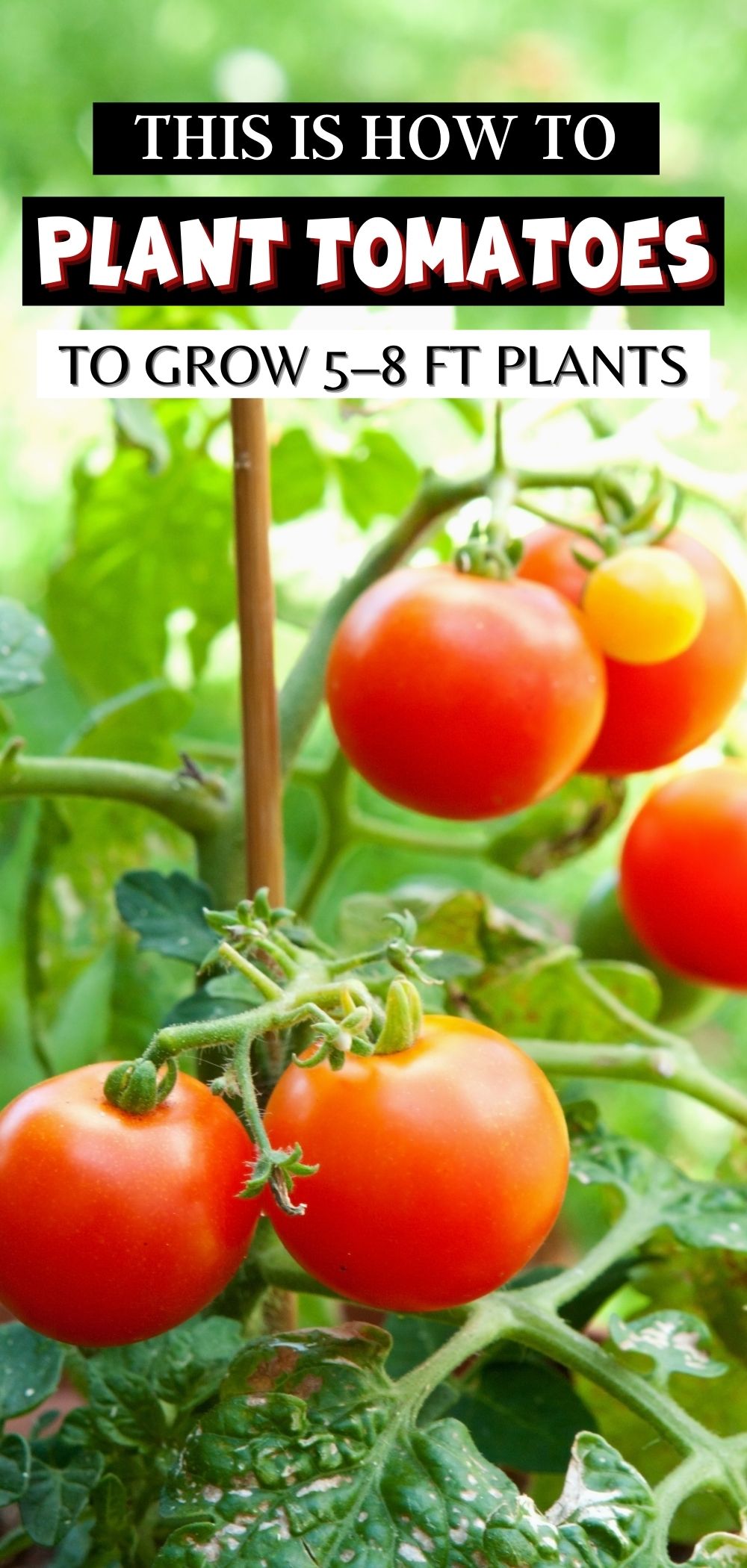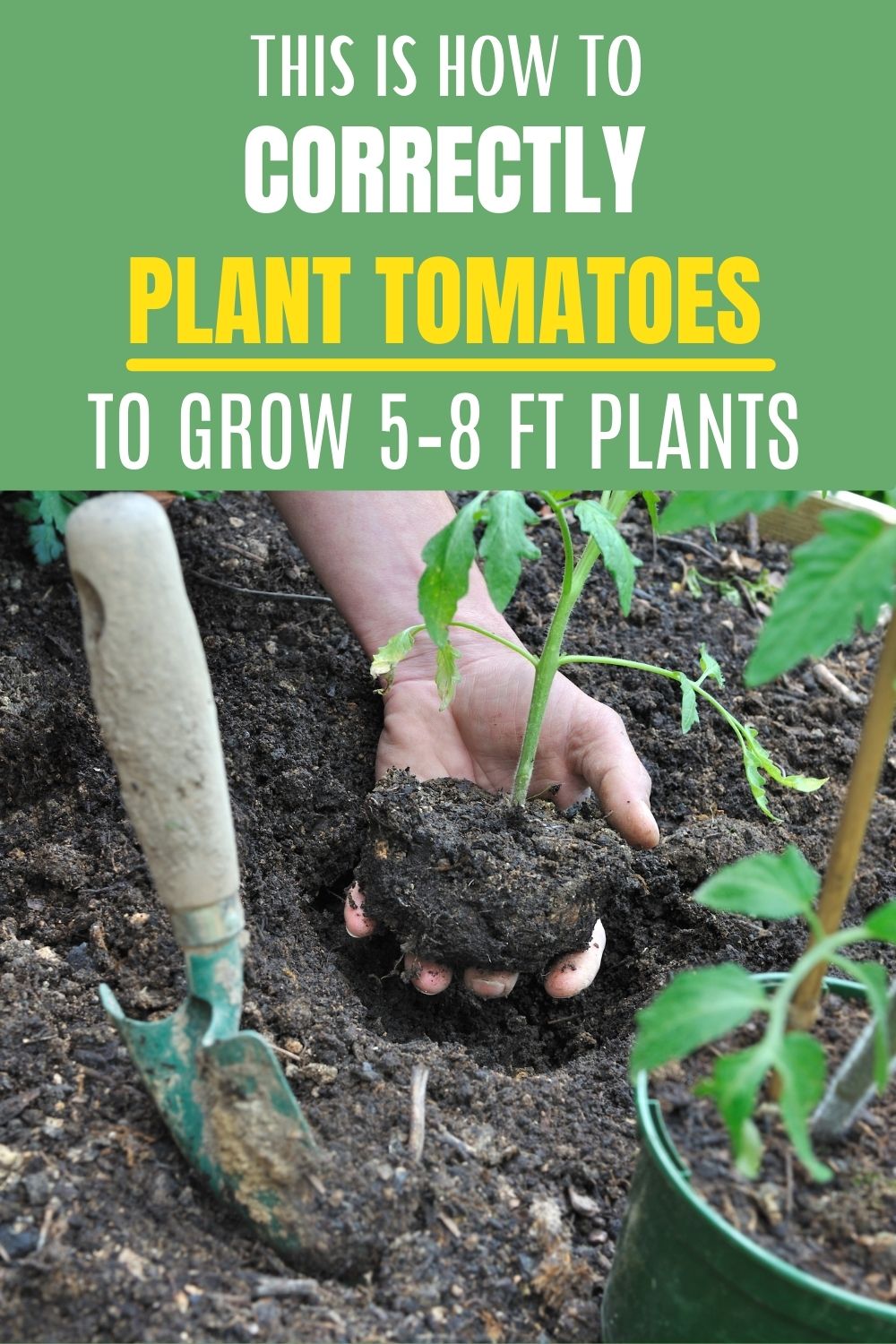GENERAL GARDENING
This is How to Correctly Plant Tomatoes to Grow 5–8 ft Plants
 Tomatoes are grown and consumed all over the world since they offer a myriad of health benefits, and a distinctive, tasty flavor.
Tomatoes are grown and consumed all over the world since they offer a myriad of health benefits, and a distinctive, tasty flavor.
They have been grown for thousands of years, since about 500 B.C. in Mexico, where they were a staple crop for the Aztecs and consumed along with beans and corn. Aztecs and other peoples in the Mesoamerica area used tomatoes in various ways in even held them in high spiritual regard, as they believed them to be “blessed with powers of divination.”
These powerful anti-inflammatory foods are the second most produced and consumed vegetable nationwide and are abundant in lycopene, beta-carotene, folate, potassium, vitamin C, flavonoids, and vitamin E.
Tomato nutrition has a lot to offer, but gardeners actually raise them mainly for one reason, and if you have ever tried a tomato straight from the garden, you know the difference. The ripe-on-the-vine freshness these tomatoes offer cannot be obtained from store-bought versions.
There are easily preserved through canning and freezing, so you can grow a bumper crop to enjoy them even throughout the winter months.
They are delicate, fragile, and special fruits and require special care to flourish. Tomatoes can be of several varieties, but are grouped into two main classes:
- Determinate varieties, also called bush tomatoes, which can grow up to 3 or 4 feet in height
- Indeterminate varieties, which can grow up to 12 feet in height, since they keep growing until they are killed by frost.
Here are some useful; tips that will help you grow healthy and delicious tomatoes in your garden:
Nutrients
Plant the tomato seedlings in pots, and poke holes underneath to prevent water stagnation.
In order to make them flourish and ripen, you should ensure they receive at least 8 hours of direct sunlight daily. Moreover, water the tomato seedlings twice a day, in the morning and in the evening.
They are ready to graduate to soil beds after about a month. Dig large holes to accommodate the seedling and its additives, of about 20-24 inches (50-60cm). It would be best if they are spaced out by at least three feet (0.9m).
Fish heads for nitrogen
Fish heads are rich in nitrogen, which is released as they decompose. A lack of nitrogen is the cause for the unhealthy look of the tomatoes, so make sure you satisfy them with organic nitrogen sources, like fish heads, fishtails, fish guts, fish waste, and all kinds of seafood waste.
Place the fish head into the hole, with the open end in contact with the soil.
Aspirin to boost their immune system
You should also drop a few aspirin tablets in the hole as well, as the acetylsalicylic acid triggers a defense mechanism in the plant, known as the Systemic Acquired Resistance Response. In this way, the tomato will fight off antigens like bacteria, fungi, and viruses.
Willow water is another natural source of salicylic acid, and it is made from the bark of the willow tree. Cut the fresh bark into 1-inch strips, place them in a jar, and pour hot water over them. After a few days, the color will be completely stripped from the bark, and you can store your willow water in the refrigerator. Before planting, you should soak the cutting in the willow water for 24 hours.
Eggshells for calcium
Low calcium levels lead to blossom end rot, a common disease that affects tomatoes, squash, peppers, and eggplant. Therefore, crush 3-4 eggshells, and pour them into the hole, to provide enough calcium and protect the blossom ends.
Bone meal for phosphorus
A phosphorus deficiency might be the reason why your tomato plants grow slowly. A bone meal from any animal is a rich source of it. Therefore, scoop a handful into the hole.
Planting
- In the end, add 2 spoonfuls of an organic NPK fertilizer, high in nitrogen, phosphorus and potassium nutrients, in a 4-6-3 ratio.
- Then, trim the lower leaves on the stem, and cover the hole with the first layer of soil. Then, add the seedling, but make sure the leaves are above the soil level.
- Spray the plant with a mycorrhizal fungi product before you extract it from the pot, to prevent diseases and boost the absorption of water and absorption.
- Place the plant into the hole, fill with soil, and gently push.
- Make a small well around the base of its stem before the first watering, in order to help it preserve the water longer. Water the tomatoes several times on the first day.
- Make sure your tomatoes get the needed sunlight in order to thrive.
- Apply compost or fertilizer twice a month, and remove any weed where necessary.
And then, just enjoy your fresh and delicious tomatoes from your own garden!

If you want to find more natural remedies, take a look at the Everyday Root Book!
With 350+ pages, you will be able to replace all of the toxic products and medications in your home with healthier, all-natural alternatives.
You will be confident in knowing exactly what is in the products your family uses and happy with the money you will save every month.
In addition, they offer you three more bonuses + 75% discount only this month!
GET THE EVERYDAY ROOTS BOOK NOW!
Included in this life changing book are:
- 105+ NATURAL HOME REMEDIES – Treat almost any illness with natural ingredients you probably already have in your kitchen.
- 75+ NATURAL BEAUTY RECIPES -Get the best hair and skin you’ve ever had and look younger with these insanely clever natural beauty recipes.
- 35+ DYI HOUSEHOLD PRODUCTS & CLEANERS – Never Buy Toxic Cleaning products again! Save a fortune and your families health with these super simple homemade cleaning products that work better than the chemical ones.


